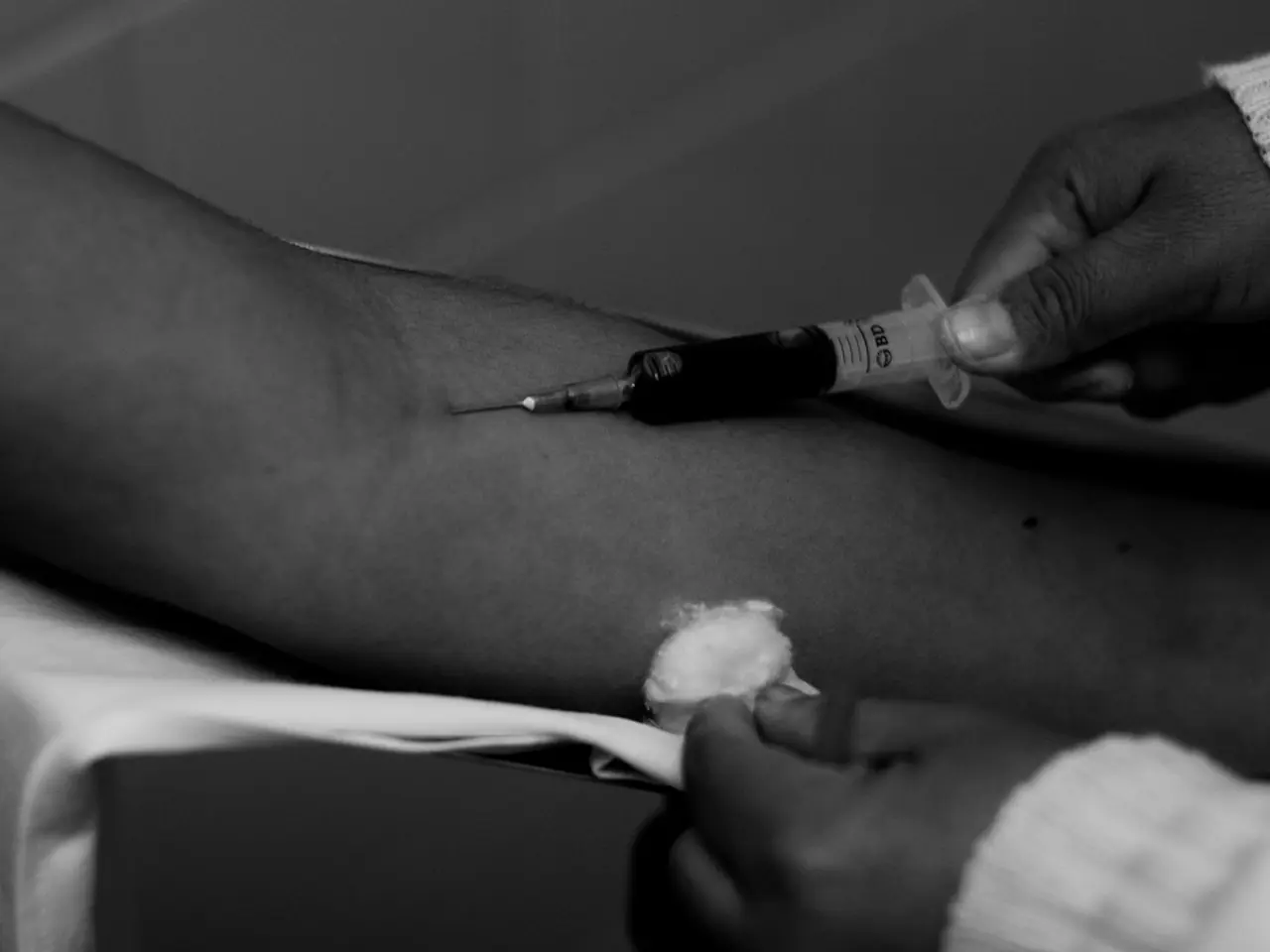Injections Through a Vein: Tools, Locations, Procedures, and Beyond
IV injections and infusions are essential medical procedures used to deliver fluids, medications, and other substances directly into a person's bloodstream. These procedures require specific equipment tailored to the patient's needs, infusion rate, and medication type.
IV Cannula (Catheter)
The first essential piece of equipment is the IV cannula, or catheter. This thin tube is inserted into a vein to provide access for fluid or medication delivery. IV cannulae come in various gauges, with smaller numbers indicating larger diameter. Common sizes include 16-gauge (for rapid infusions or blood transfusions), 18- and 20-gauge (standard for most therapies), and 22-gauge (used for children or small veins). Special types include winged infusion sets (butterfly cannula) for temporary or hard-to-access veins, and cannulae with and without wings or injection ports [1][2].
IV Administration Set (Tubing)
The IV administration set, or tubing, connects the IV bag with the cannula, allowing controlled fluid flow. It features a drip chamber for visualizing flow rate, a roller clamp or dial for adjusting gravity drip rate, and Y-port injection sites that enable additional medication administration without interrupting the main infusion. A 20-drop per mL administration set is commonly used for precise flow control suitable for many adult patients, with a typical length around 92 inches for flexible patient positioning [1].
IV Bag or Syringe
IV bags contain fluids such as saline, dextrose, blood products, or medications for infusion. Bags come in various volumes (e.g., 250 cc, 500 cc, 1000 cc).
Infusion Pump (Optional)
An infusion pump provides precise control over the infusion rate, especially important for critical medications requiring exact dosing and flow rates. It surpasses the accuracy of manual roller clamps [2].
IV Lines and Ports in Special Cases
Different types of IV lines are used depending on the duration of treatment. Peripheral IVs are short catheters for short-term use, typically inserted in hand or arm veins. Midline catheters are longer peripheral lines placed in upper arm veins, suitable for intermediate duration. Central venous catheters (CVCs)/Ports are more permanent lines inserted into large central veins for long-term therapy like cancer treatment or frequent blood draws [3].
How They Work Together
The IV system works by a healthcare provider inserting the appropriately sized IV cannula into the vein. The IV administration set tubing connects the cannula to the IV fluid bag. Gravity allows fluid to flow through the drip chamber, where the rate is monitored visually by counting drops. A roller clamp adjusts flow manually or an infusion pump controls flow electronically for precision. Additional drugs can be injected safely via Y-port injection sites without stopping the primary infusion [1][2][3].
IV infusions offer the advantage of controlled drug delivery over an extended period, but they can also have risks and side effects, such as infection, phlebitis, and air embolism. Direct IV injections, or IV pushes, involve injecting a therapeutic dose of a medication or another substance directly into a vein. One of the most common complications of IV injections is inflammation of the vein, or phlebitis, which occurs in up to 31% of people using IV catheters during infusions [4].
The choice between direct IV injections and infusions depends on the specific needs of the individual and the nature of the medication being administered. Rapid IV injections offer the advantage of rapid drug delivery, but they can also have risks and side effects. Healthcare professionals may administer IV injections in situations where a person needs a life-saving medication quickly, requires a precise dose, needs a large dose over an extended period, oral administration is impractical or ineffective, or multiple injections are required.
References:
[1] "Intravenous Therapy: Equipment and Techniques" (NCBI, 2020) [2] "Intravenous Fluids and Medications" (Saunders, 2019) [3] "Central Venous Catheters" (Mayo Clinic, 2021) [4] "Phlebitis" (Mayo Clinic, 2021)
- For rapid drug delivery, healthcare professionals may opt for direct IV injections, especially in situations where a life-saving medication is needed quickly.
- In the context of health-and-wellness and medical-conditions, IV infusions can be used to deliver medications for COPD, while anthrax treatment might require direct IV injections for precise dosing.
- AQ, the science behind disinfection, plays a crucial role in preventing infections during IV procedures, ensuring health and wellness for patients.
- In cases requiring long-term therapy, such as cancer treatment or frequent blood draws, central venous catheters (CVCs) or ports might be utilized as part of the therapies-and-treatments plan.




